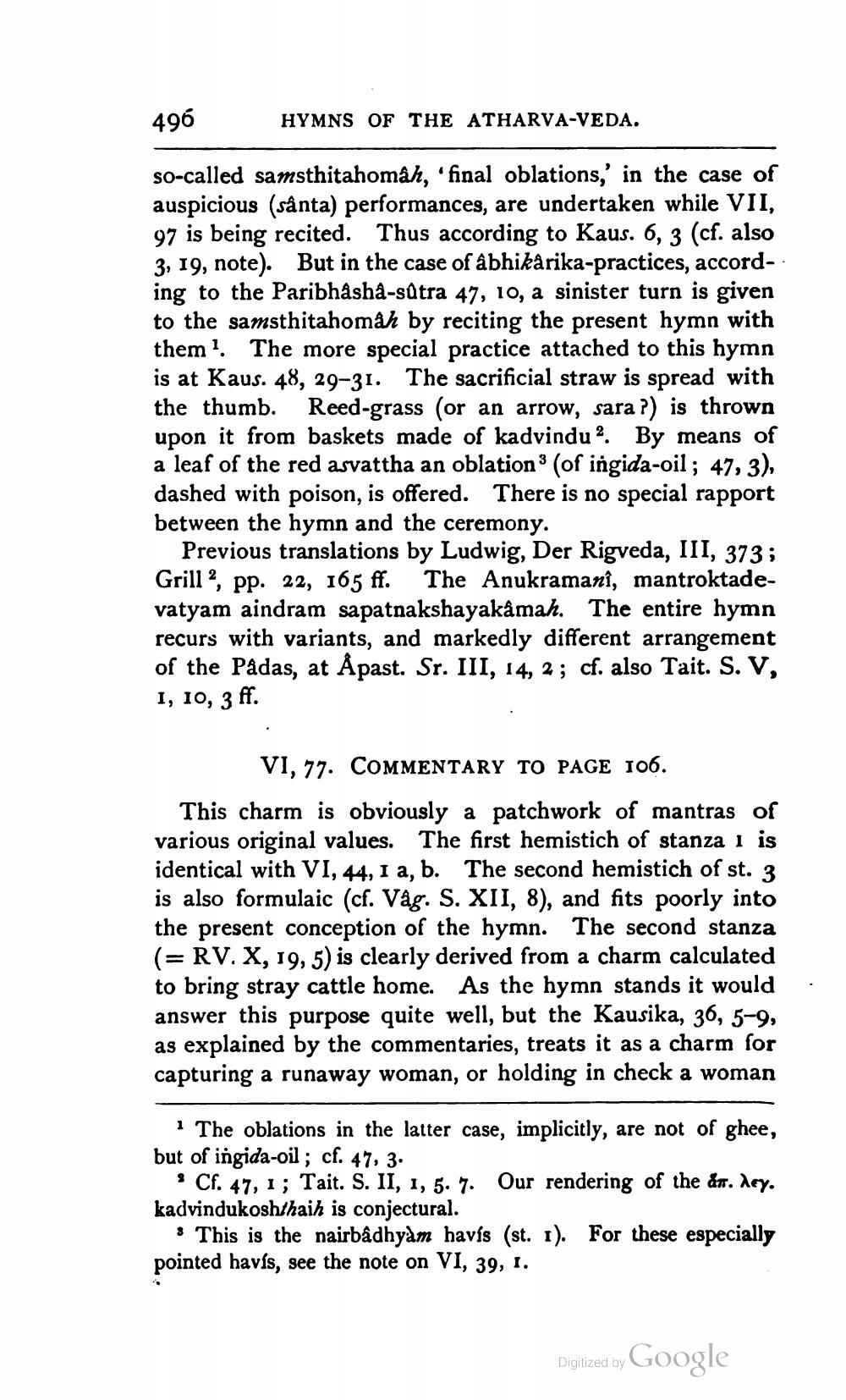________________
496
so-called samsthitahomâh, 'final oblations,' in the case of auspicious (sânta) performances, are undertaken while VII, 97 is being recited. Thus according to Kaus. 6, 3 (cf. also 3, 19, note). But in the case of âbhikârika-practices, according to the Paribhâshâ-sûtra 47, 10, a sinister turn is given to the samsthitahomâh by reciting the present hymn with them1. The more special practice attached to this hymn is at Kaus. 48, 29-31. The sacrificial straw is spread with the thumb. Reed-grass (or an arrow, sara?) is thrown upon it from baskets made of kadvindu 2. By means of a leaf of the red asvattha an oblation 3 (of ingida-oil; 47, 3), dashed with poison, is offered. There is no special rapport between the hymn and the ceremony.
Previous translations by Ludwig, Der Rigveda, III, 373; Grill 2, pp. 22, 165 ff. The Anukramanî, mantroktadevatyam aindram sapatnakshayakâmah. The entire hymn recurs with variants, and markedly different arrangement of the Pâdas, at Åpast. Sr. III, 14, 2; cf. also Tait. S. V, I, 10, 3 ff.
HYMNS OF THE ATHARVA-VEDA.
VI, 77. COMMENTARY TO PAGE 106.
This charm is obviously a patchwork of mantras of various original values. The first hemistich of stanza i is identical with VI, 44, I a, b. The second hemistich of st. 3 is also formulaic (cf. Vâg. S. XII, 8), and fits poorly into the present conception of the hymn. The second stanza (= RV. X, 19, 5) is clearly derived from a charm calculated to bring stray cattle home. As the hymn stands it would answer this purpose quite well, but the Kausika, 36, 5-9, as explained by the commentaries, treats it as a charm for capturing a runaway woman, or holding in check a woman
1 The oblations in the latter case, implicitly, are not of ghee, but of ingida-oil; cf. 47, 3.
Cf. 47, 1; Tait. S. II, 1, 5. 7. Our rendering of the år. λey. kadvindukosh/haih is conjectural.
This is the nairbâdhyam havís (st. 1). For these especially pointed havís, see the note on VI, 39, 1.
Digitized by
Google




